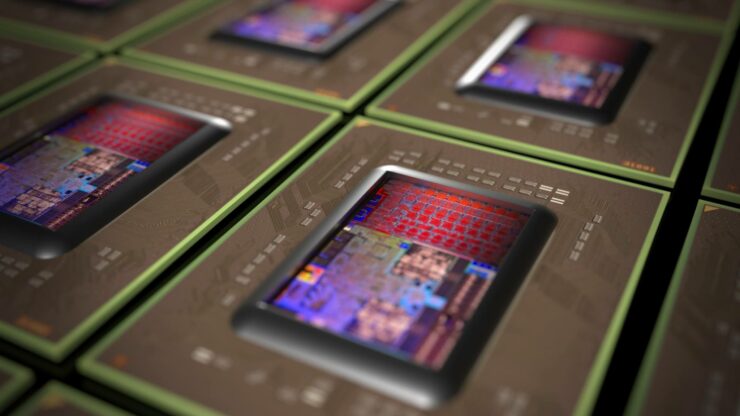AMD has finally revealed its first processors with new architecture. It is literally their first new line in years, as for example, the current FX 8350 were released three years ago, though these are likely to remain on sale for one more season. But the highest interest of the company lies in integrating CPU and GPU on a chip, the APUs.
The new APUs come with Carrizo architecture, the sixth generation of Serie A processors from the company. The promises are the usual: more performance, lower consumption and more autonomy in laptops as these processors are designed for the mobility industry.
Improvements for low-cost laptops
AMD’s goal with these processors is to provide gamers with the chance to get laptops that are good enough to play StarCraft or League of Legends with good graphic quality, without going broke. Moreover it’s usually counterproductive to spend so little on a laptop if you want it for gaming because, well, you can’t upgrade it (at least till Thunderbolt comes up).
The GPU from these processors supports DirectX 12 (in case you had doubts), and can operate in either Dual Graphics mode with a Radeon M370DX R7 (the D is dual) or with the Radeon R7 M365. The results that AMD shows in its graphics are good, with 40 fps at 1080p and high quality graphics in StarCraft, which for a laptop of 400 to 800 euros is really good.
Carrizo architecture supports HSA 1.0 (HSA stands for Heterogeneous System Architecture), which allows using the GPU for heavy processing tasks in graphic design applications. It is the answer to Nvidia’s CUDA architecture, and that’s what makes their motherboards the best for now when it comes to editing and design.
On the side of autonomy, these APUs can be used to watch up to 8.3 hours of compressed video in H264 at 1080p with 50 Whr of battery capacity. It is a major leap compared to the 3.3 hours of current APUs. The improvements in this sixth generation of APUs are also noted when playing content on HEVC (High Efficiency Video Encoding). Read more: Gaming Laptops under 500
A note on autonomy
In the image of this section you will see that AMD processors can go from 15 W to 35 W, an adjustable capacity by the assembler. It seems to us a little deceptive or an advertising gimmick, as the infographics indicates that Intel processors consume 15W, when they can also be regulated in a range between 7.5 and 15W, but they obviously won’t put that. That’s why I have doubts about the autonomy improvements from Intel.
The real problem that they face before buyers is precisely this, in which these new Carrizo processors feature the normal mode of 15 W, but at the discretion of the assembler, the equipment may or may not have access to an additional mode of 35 W of consumption and more performance. Therefore, seeing that a laptop indicates that they a A8-8600P will not be a complete indicator of its power.
Performance with architectural change
The base of the Carrizo APUs are the four Excavator cores which include an integrated third generation CoreNext graphics. They use DDR3 memory up to 2133 MHz and support a myriad of Windows features, as well as different formats of video encoding, hardware encryption or support of up to three monitors.
But these chips are still manufactured at 28 nm, in a new FP4 package, and with Intel already showing us 10 nm, frankly, it is an architecture that until I don’t see it working, I won’t believe everything that AMD promises in terms of autonomy. AMD often promises much more than what they finally bring in its processors, as this has happened with the FX 9590 without going too far back in time.
It’s not usually evident a priori on why two processors of the same core speed can give very different performance results. This is due mainly to the processor speed being one more thing to look at, with the CPI the main one, the instructions per clock cycle that the processor can execute.
This section of the CPI has been enhanced by AMD, and eventually managed to reduce the area occupied by Carrizo chips. It has also doubled the amount of L1 cache up to 128 KB to improve instruction buffer management and reorganization, and also this new cache has lower latency in moving data between memory and CPU, something that the previous AMD architectures were not particularly good at. The result is an improvement of up to 15% in Carrizo’s CPI.
When it comes to graphics, the new HSA architecture, along with new techniques to reduce consumption, are actually where the major improvements are, though they will not be noticed in all cases in games, but rather in the design. Still, with the time that AMD has spent, they promise improved graphics performance of up to 65% (albeit in a test such as 3DMark11).
AMD, you better not disappoint
Overall, the new Carrizo chips do not inspire much confidence. Certainly they are up there with Intel processors when it comes to embedded graphics, but as I said, there are some dark spots in AMD’s presentation. Especially in regards to consumption and performance, considering that Intel already has integrated the Iris Pro 6200 and 6100 GPUs almost on the streets and they give a great performance at 1080p.
The real problem that I see in the current situation of AMD, and that I constantly repeat, is that it is leaving Intel and Nvidia in a monopoly situation. AMD products during the past year have not been at the standard of what the market wants, and it’s been long since they presented something new and important (two years actually). That in the world of chips is an eternity.
AMD has to prove that they’re still an upfront player, and Carrizo is the first step for this. The new graphics cards that will be launched on June 16 will be their chance. With AMD saying that they will compete on performance rather than price, we’ll see what the market response is to their intentions.
Read More:
Gaming laptop under 600







